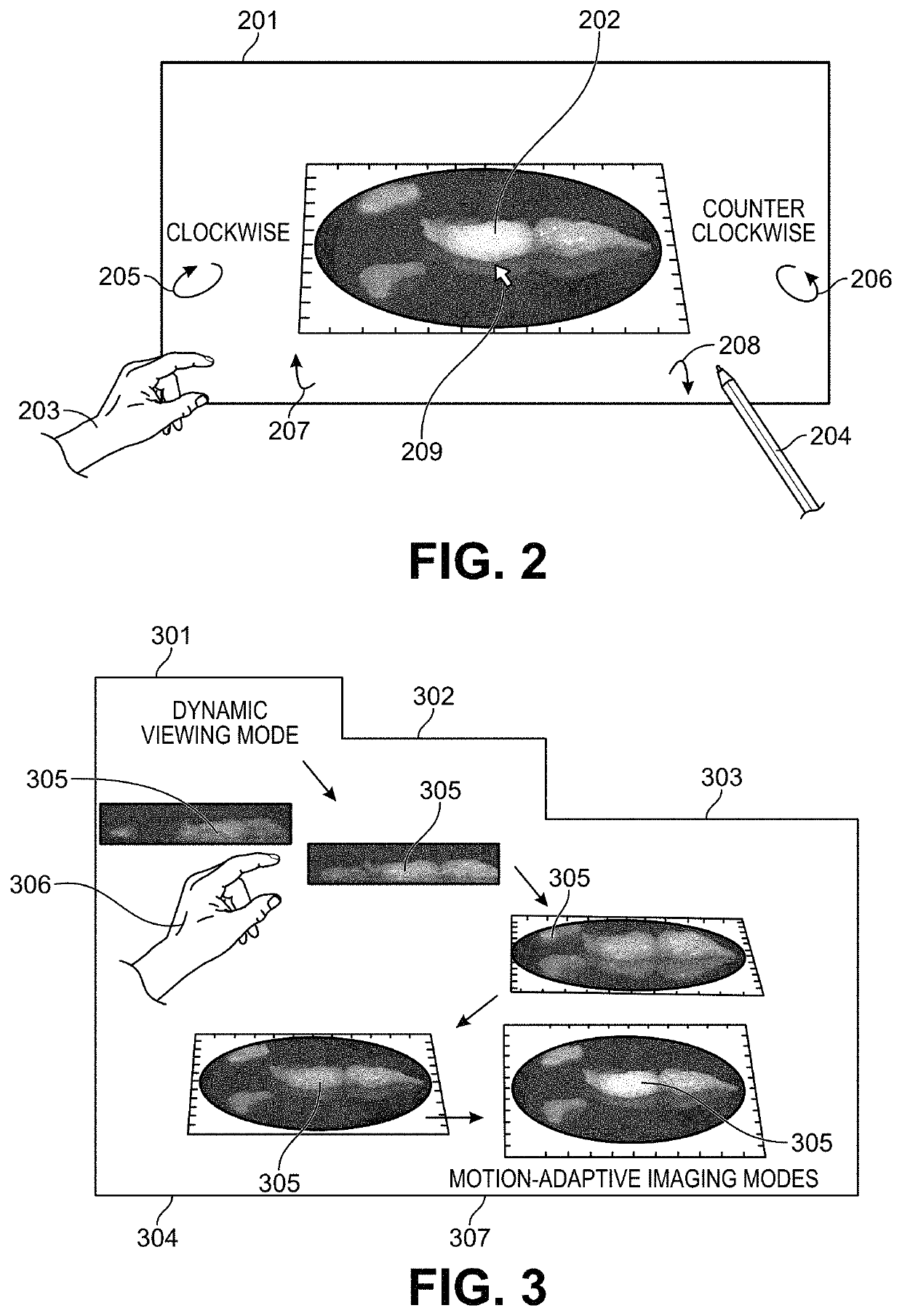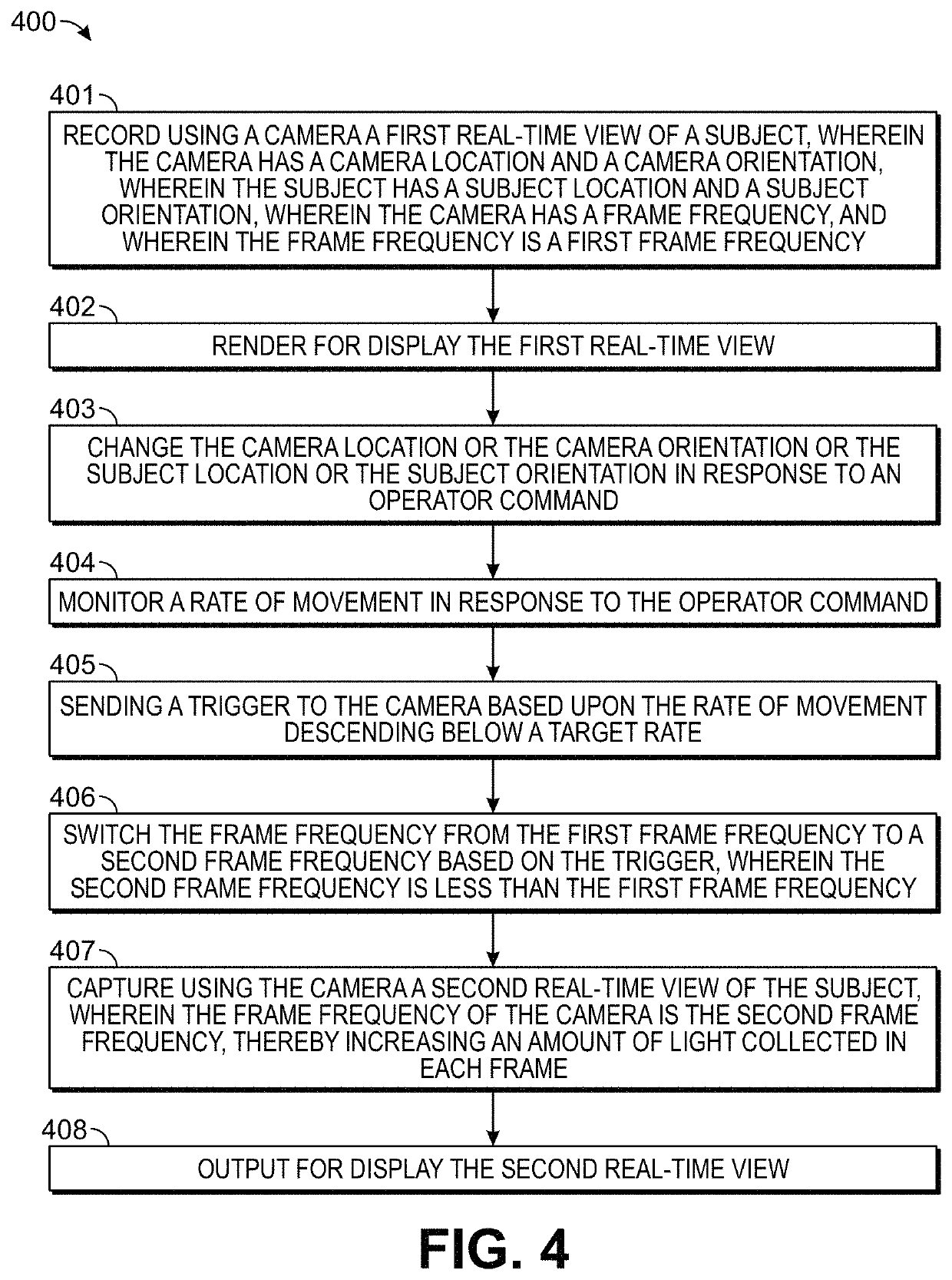Motion-adaptive interactive imaging method
an interactive imaging and motion-adaptive technology, applied in the field of motion-adaptive interactive imaging methods, can solve the problems of difficult to implement margin assessments based on frozen sectioning on breast cancer specimens, difficult manipulation and orientation of complex three-dimensional (3d) primary specimens for full inspection and processing, and significant ambient interference, etc., to achieve enhanced image quality, better sensitivity, and longer integration time
- Summary
- Abstract
- Description
- Claims
- Application Information
AI Technical Summary
Benefits of technology
Problems solved by technology
Method used
Image
Examples
Embodiment Construction
[0029]Embodiments of the present invention relate in part to motion-adaptive switching of imaging functions, such as those, for example, used for surgical or biopsy imaging. The provided methods and systems can monitor for changes in motion, and responsively enhance or modify real-time images being captured or rendered for display. This can be accomplished by analyzing user control behaviors to determine when and how to optimize imaging results, while simultaneously responding to inputs from the user who is interactively directing a viewing motion around areas of interest. In brief, the user can use motion control to direct real-time 3-D imaging of a sample. The motion-adaptive imaging can then maintain a real-time, high-speed preview as the image is in motion, while automatically switching to an enhanced functional image when the image is relatively stationary. Because the imaging needs during movement and when stationary are often different, or even contradictory, the ability to a...
PUM
 Login to View More
Login to View More Abstract
Description
Claims
Application Information
 Login to View More
Login to View More - R&D
- Intellectual Property
- Life Sciences
- Materials
- Tech Scout
- Unparalleled Data Quality
- Higher Quality Content
- 60% Fewer Hallucinations
Browse by: Latest US Patents, China's latest patents, Technical Efficacy Thesaurus, Application Domain, Technology Topic, Popular Technical Reports.
© 2025 PatSnap. All rights reserved.Legal|Privacy policy|Modern Slavery Act Transparency Statement|Sitemap|About US| Contact US: help@patsnap.com



